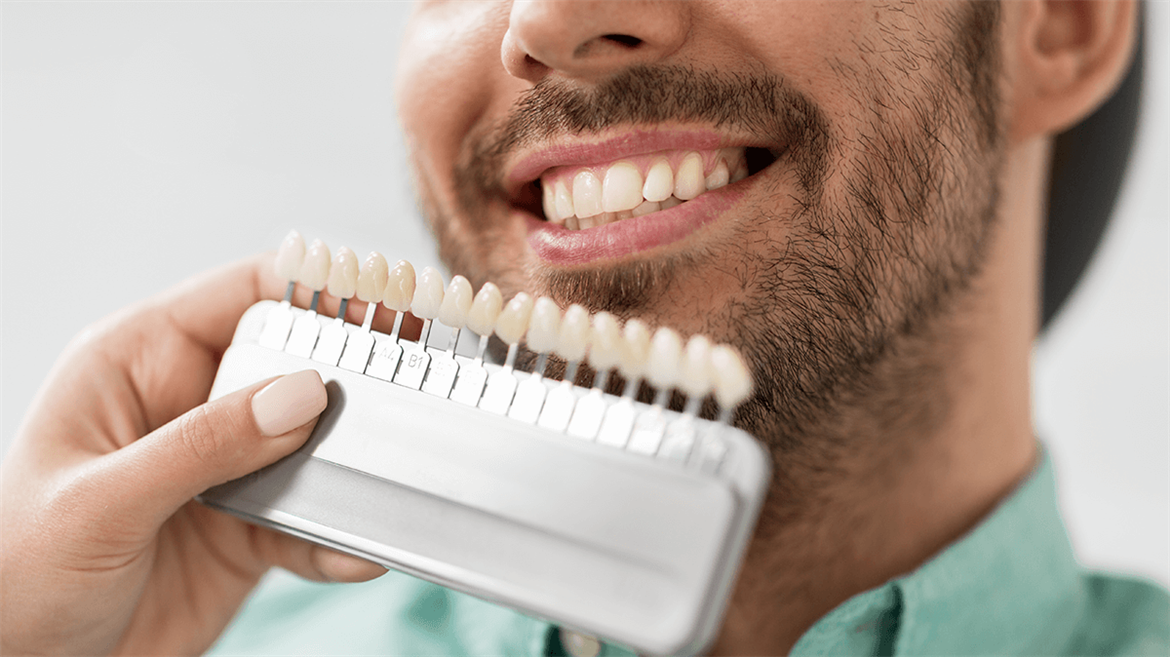Bleaching

What is the Bleaching Process?
Bleaching is a dental whitening method performed to replace teeth that have changed color over time with a healthy and radiant appearance.
It is extremely important to apply teeth whitening procedures under the supervision of a doctor. The use of dental gels or paint-like products is not recommended unless a doctor's approval is obtained. In order not to cause permanent damage to the teeth, the whitening process should be performed in a clinical environment and by well-equipped dentists. The Bleaching technique applied in the clinical setting can take an average of 60-90 minutes. Teeth whitening, which has a long-lasting effect, does not give results in individuals with porcelain veneers. It is very important that the teeth are strong and healthy in order to obtain a positive result from the procedure.
Who Is Bleaching Treatment Suitable For?
As a result of heavy consumption of tea, coffee, cigarettes and acidic beverages, the enamel layer on the teeth can become more porous. However, stains and plaque formation are seen on the teeth, depending on the eating and drinking habits. Teeth whitening techniques can be applied to many individuals who are uncomfortable with this unaesthetic appearance and do not have serious dental health problems.
For Bleaching procedures, the individual must have completed their tooth development. At this point, the procedure is considered appropriate for every individual over the age of 16. It is expected that the individual who has problems such as dental caries, gum diseases, tooth loss will primarily improve oral and dental health with orthodontic treatments. In order to avoid problems in this regard, it is very important to follow the process recommended by the specialist dentist.
If Bleaching treatment is applied to patients younger than 16 years of age, permanent damage may occur. The nerves in the mouth region of patients younger than 16 years of age are quite large. At this point, it may be possible to damage the nerves during teeth whitening treatment and eventually to cause serious problems that require root canal treatment.
What are the Bleaching Methods?
Bleaching methods are applied with two different techniques as home type and office type. Doctor control is required for both types of whitening. During this control, a detailed intraoral examination of the individual is performed and it is determined whether there is any discomfort that may prevent the procedure. If the patient is suitable for the whitening process, it is decided which tooth whitening technique will be preferred.
- Home Type Bleaching
Before applying the home-type teeth whitening technique, which is one of the teeth whitening techniques preferred by individuals, a doctor's control is required. The dentist may decide on the home-type teeth whitening method as a result of the physical examination. At this point, the patient's teeth are measured. According to these measurements taken, thin and transparent plates are prepared for the patient in the laboratory. Gel is applied to the plaques and then placed to integrate with the teeth. The waiting time of these plaques on the teeth is 5-6 hours on average. The intervals at which this procedure should be performed should be determined by the recommendation of the dentist. At-home teeth whitening is a method that should be performed in a clinical setting. In order to control dental health at home, it is recommended to use dental care sets in addition to the whitening process.
- Office Type Teeth Whitening
In-office whitening is one of the bleaching methods performed by the dentist in the clinical setting and giving maximum results. During this technique, the teeth are dried first, then a protective gel is applied to the gums so that the whitening agent does not cause damage.
In the office type whitening method, the whitening gel is applied to the front surfaces of the teeth. Sometimes it may be necessary to wait 20-40 minutes after the procedure. During the waiting period, a laser is applied to the teeth as a light source. There is no need for a laser when it comes to the use of gel that can show an effect without light. Whitening sessions can be repeated several times until the patient's desired appearance is achieved. In order to obtain fast and effective results, the office type whitening technique can be preferred.
What Should Be Considered After Teeth Whitening Treatment?
Consumption of alcohol, cigarettes and food-beverages containing dyestuffs should be avoided for 2-3 days on average after the bleaching process. In this process, the consumption of acidic products should be limited in order to prevent damage to the teeth.
Teeth should not be brushed hard for the first week after Bleaching. Soft toothbrushes should be preferred in this process. The use of auxiliary products that help protect oral and dental health can be continued one week after the procedure. There is no harm in using special pastes for individuals who experience extreme sensitivity in their teeth.
In order to feel the effect of the bleaching application quickly, any product containing dyestuffs should not be consumed for an average of 48 hours after the bleaching process. It is extremely important to follow the doctor's recommendations in order not to adversely affect the treatment process.
Bleaching, performed by a specialist dentist, does not harm the teeth. However, in order to avoid any risk of damage, attention should be paid to the structure of the teeth and uncontrolled whitening should not be applied to teeth with decayed or weak enamel tissue. Professionally applied teeth whitening can enable the individual to achieve an aesthetic and radiant smile.

